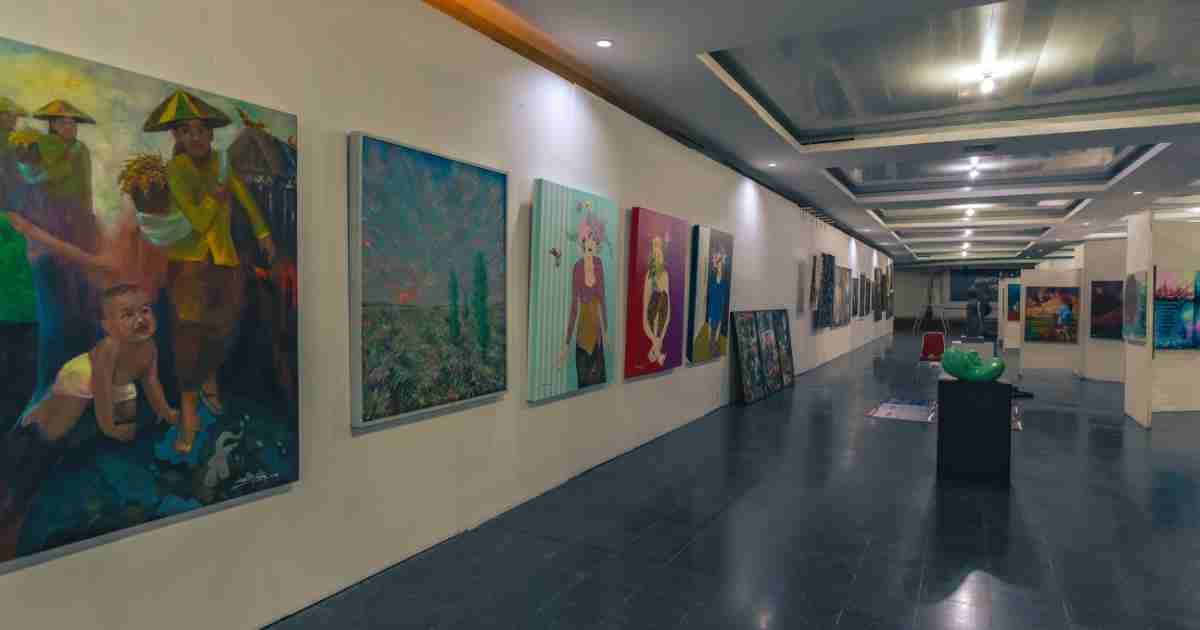The beauty of Indonesian artworks has been recognized for centuries, and the quality of these works is truly exceptional. The number of domestic artworks is a clear testament to the enormous potential of the fine arts subsector. Regarding quality, quantity, creative actors, productivity, and market potential, the fine arts subsector is a force to be reckoned with. The various works of art made by Indonesian artists play a crucial role in supporting the growth of the creative economy sector.
Data from the Tourism and Creative Economy Outlook 2020/2021 shows that the fine arts subsector contributed IDR 2.64 trillion to the national GDP in 2020, thanks to the efforts of 51,721 individuals employed in the sector.
The growing Indonesian fine arts market provides fresh air for the creative economy subsector. It supports the growth of the creative economy and demonstrates that the quality of Indonesian artists’ work is competitive in the international market. This is evident from the increasing participation of local artists in overseas exhibitions.
Local Artists Exhibit Abroad
Local artists are expanding their horizons by participating in art exhibitions abroad. One of them is Roby Dwi Antono, a young artist from Ambarawa, who recently exhibited his 1.2-ton bronze sculpture “Nalakala” at Passeig Vara de Rey in Ibiza, Spain, as part of the CAN Art Fair 2024.

Photo: The atmosphere of a painting art exhibition visited by many art lovers (Shutterstock/SevyStocks)
Indonesian artist Yunizar has gained international recognition in the field of sculpture, particularly for his bronze sculptures. Hailing from Talawi, North Sumatra, Yunizar successfully exhibited his work at the 9th edition of the renowned Frieze Sculpture event, which took place at the English Gardens in The Regent’s Park, London, in 2021. Before this achievement, Yunizar held a solo exhibition at the National University of Singapore (NUS) Museum in 2007.
Ronnie Jiang, an Indonesian painting artist, also had the opportunity to exhibit his work at the 2021 Destructuralism Figurative (DF) Art Project exhibition in Paris. Showcasing paintings with the destructuring of several faces by combining colors and unique stories, this local artist’s work was a hit at the exhibition.
Apart from the three artists mentioned above, many other local artists have exhibited abroad. Some of them are Naufal Abshar, who had an exhibition in Lithuania, and Jerry Thunggaltira, a contemporary painter who exhibited his paintings at the International Art Symposium in Jordan and won the Creative Art Work Winner Award.
Adaptation of Local Artists to Digital Art
Technological advancements have expanded the market for the fine arts sector, particularly with the emergence of NFTs (Non-fungible Tokens) through which artists can showcase their digital work. The development of NFTs holds immense potential and provides opportunities for players in the creative industry, especially for artists working seriously in digital art.
Utilizing NFTs to showcase artwork makes sharing art globally easier and simplifies the buying and selling process. It allows transactions to occur online rather than through traditional sales or in-person meetings. As a result, one-of-a-kind and authentic pieces can be sold as NFTs at competitive prices.
Interestingly, you will benefit not only from the sale of the first work but NFT technology will also provide royalties and profits from all subsequent sales.
To promote the seamless integration of NFTs in the fine arts subsector, the Ministry of Tourism and Creative Economy/Board of Tourism and Creative Economy (Kemenparekraf/Baparekraf) is hosting a free “Illustration and NFT Introduction Class” for artists interested in transitioning their art sales to the digital realm through NFTs.
If you are interested, the class will start online from July 10 to August 10, 2024. To register, please click on the following link: bit.ly/ClassIlustrationBaparekraf.
Cover: Illustration of evidence of the growing popularity of the fine art market in Indonesia (Shutterstock/Diego Da Pasen)









